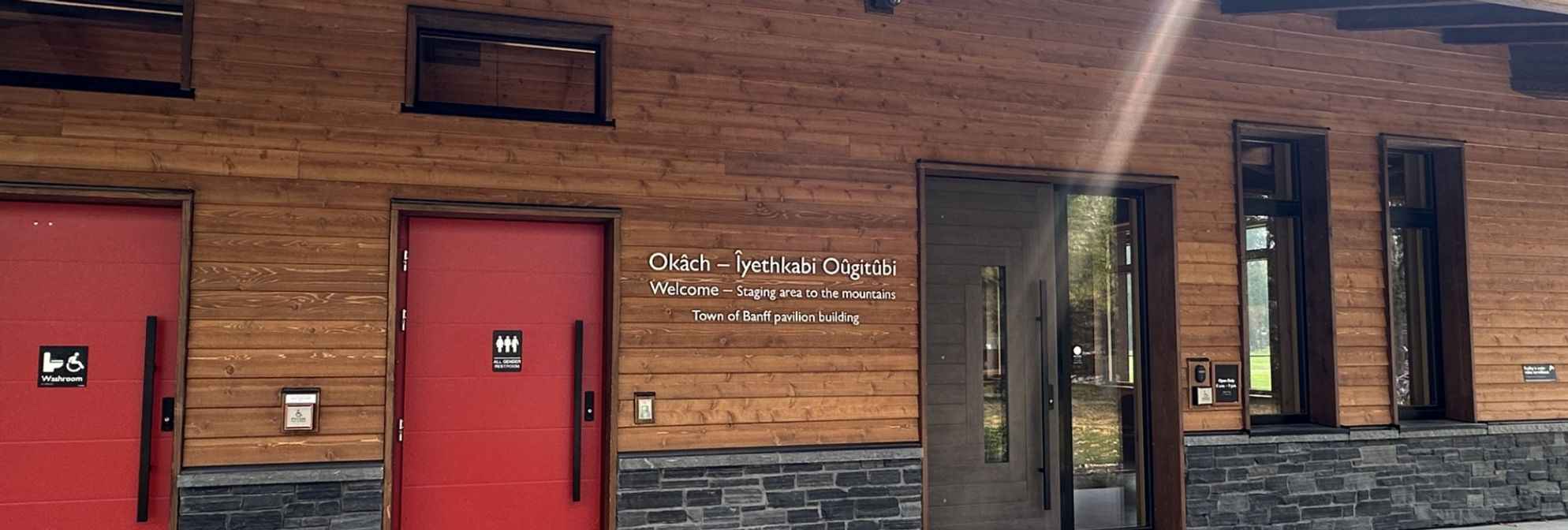
Partners on the Path: Okâch — Îyethkabi Oûgitûbi — A New Beginning at the Banff Recreation Grounds Pavilion
Story submitted by the Town of Banff
The recently completed pavilion at the Banff Recreation Grounds, a structure designed to foster community connection and celebration, has been bestowed with a name that carries deep meaning and reverence —Okâch— Îyethkabi Oûgitûbi which translates to "Welcome–Staging area to the mountains" in the language of the Îyârhe (Stoney) Nakoda First Nation.
The journey to naming this pavilion began with the realization that Banff is not just a destination for residents and visitors. It is a land rich with history and the ancestral home of Indigenous Peoples. As the Town of Banff sought guidance on honouring that heritage, a thorough consultation process was initiated with the Stoney Nakoda First Nation. This involved the wisdom and voices of consultation officers and respected Elders from the Bearspaw, Chiniki, and Goodstoney First Nations, who hold the stories of this land in their hearts.
The name Okâch — Îyethkabi Oûgitûbi resonates deeply with the pavilion's purpose as a gathering place, designed not only for recreation but also for connection and understanding. The pavilion stands as a beacon of the Town of Banff’s commitment to recognizing the cultural significance of the area, encapsulating a diverse history.
As part of the Town of Banff Indigenous Framework, considerations for naming municipal properties involve more than just words; it is about building partnerships and fostering relationships with Indigenous Peoples. The framework invites conversations that enrich the community, allowing traditions, decision-making processes, and languages to flourish side by side with modern practices.
The pavilion is a symbol of this commitment from the Town of Banff—a cherished spot where the community comes together, a venue alive with laughter and learning, set against the backdrop of the surrounding mountain peaks.
The pavilion embodies the vision to Lead Tourism for Good by providing an opportunity for visitors and locals alike to connect with the land’s deep-rooted histories, to learn, and to honor the rich cultural tapestry of the Îyârhe Nakoda and other Indigenous Peoples.